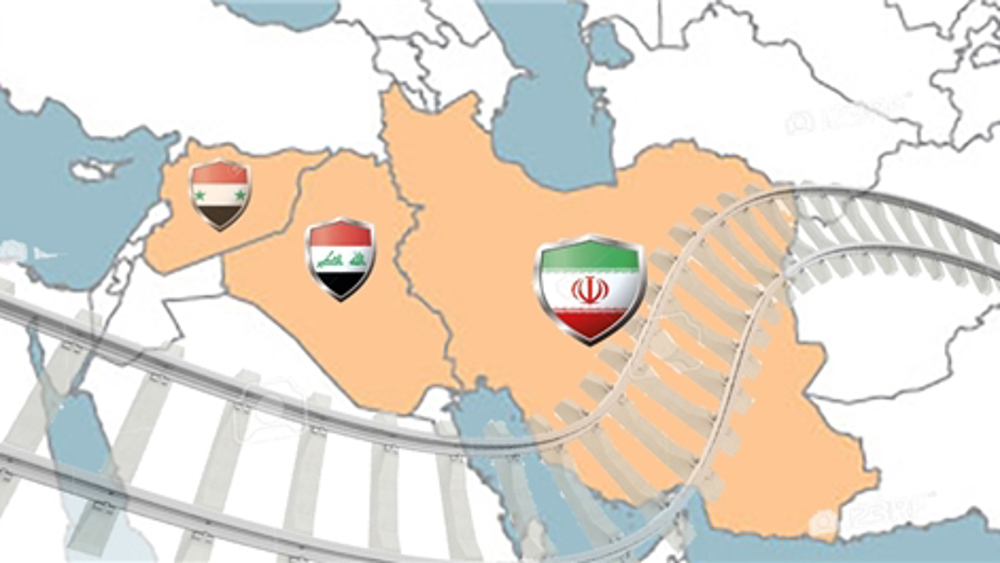
Third parties both from the region and outside it have been facilitating the push, two of which stand out for their prominent role: Iraq and China – one trying to revive and expand its regional reach and the other aiming for global footprint.
On Saturday, Iraq launched a $17 billion project to develop its road and rail infrastructure, linking Europe with the Persian Gulf and other Middle East countries.
Prime Minister Mohamed Shia al-Sudani announced the project during a conference with transport ministry representatives from Iran, Jordan, Kuwait, Oman, Qatar, Saudi Arabia, Syria and the United Arab Emirates.
Sudani has prioritized the reconstruction of the country’s road network, along with upgrading its electricity infrastructure after years of war and occupation by the US and its allies which have left the Arab country’s infrastructure in tatters. Iraq’s roads are in terrible condition and those connecting the capital Baghdad to the north cross areas where Daesh remnants continue to carry out sporadic attacks.
The Development Road aims to tie the Grand Faw Port in Iraq's oil-rich south to Turkey, turning the country into a transit hub by shortening travel time between Asia and Europe in a bid to rival the Suez Canal.
The Iraqi parliament’s transport committee said the project could be completed in “three to five years”, adding any country that wishes “will be able to carry out part of the project”.
Incidentally, the launch of the project came just after Iran and Russia signed a deal to finance and build an Iranian railway line as part of an international North–South Transport Corridor.
The Rasht-Astara railway is seen as an important link in the corridor, intended to connect India, Iran, Russia, Azerbaijan and other countries via railways and sea - a route that Russia says can rival the Suez Canal as a major global trade route.
Iraq’s road and rail project can easily connect to Iran’s sprawling railway network and open pathways for Baghdad to connect with Afghanistan, Pakistan, China, the Caucasus, Central Asia, and the Far East.
This positions Iraq as a transit route for trade between the Arab countries of the Persian Gulf, Central Asia, and Russia.
The project can also promote and significantly expand religious tourism which saw more than 21 million people from around the world, including 3 million Iranians, visit Iraq for the annual Arbaeen in the holy city of Karbala in 2022.
This regional integration through connectivity can lead to increased revenues for the treasuries of the countries involved and shield their economies from the effects of the extrajudicial sanctions.
Iraq currently relies on Iran for natural gas that generates as much as 45 percent of its 14,000 megawatts of electricity consumed daily, but it has to secure temporary waivers from the US in order to import it.
What Iraq needs is to tie its Development Road to what is being billed as the railway of resistance connecting it to Syria and Iran.
The idea to build a rail link between Iran and Iraq was conceived more than 20 years ago.
In 2011, Iran completed a track linking its Persian Gulf port of Khorramshahr to Shalamcheh on the border with Iraq. Three years later, it signed an agreement to link Shalamcheh to Basra in Iraq.
The MoU included Iran building a bridge over the Shatt al-Arab which Iranians call Arvand River and constructing a 32 km railway line from the Shalamcheh border to the Basra railway station.
In 2018, Iran announced that it intended to extend the railway further to Syria, with Iraq’s participation, connecting the Persian Gulf to the Mediterranean Sea.
The ambitious Iran-Iraq-Syria railway stretches from the Imam Khomeini Port to Shalamcheh before crossing the border to Basra and on to Baghdad and Anbar province on the border with Syria. From Iraq’s al-Qaim it extends to Syria’s Albu Kamal where it detours the shorter al-Tanf route because of the presence of US troops and heads to Latakia on the Mediterranean.
This is a landmark endeavor which can contribute to reconstruction efforts in Iraq and Syria, bolster the transport sector, and facilitate religious tourism between Iran, Iraq, and Syria.
Despite all its advantages, the project has been mired in delays, chiefly because of the Iraqi prevarication.
Last month, after Tehran announced that the two neighbors had finally agreed to complete the construction of 32-km Shalamcheh-Basra track following Iraqi Transport Minister Razzaq Muhibis al-Saadawi’s visit to Iran, Baghdad was quick to note that the project was related to “passenger transportation only”.
In January 2022, when Iran’s late minister of roads and urban development Rostam Qassemi announced after visiting Baghdad that the two sides had agreed finish the project his Iraqi counterpart similary explained that there was no agreement, but a "meeting minutes" of the ministers' talks.
Such statements and other disparaging stances have raised suspicions that third parties, notably the United States, are hindering the progress of the project.
In the past, some Iraqi politicians have claimed that the rail link with Iran could upend connecting the port of Faw in Basra to the Turkish and Syrian borders in what is known as the Dry Canal project. They say the Imam Khomeini port in Iran could diminish the significance of the Faw Port if the project comes online.
The reality, however, is the other way around. The rail link with Iran would enhance the strategic importance of Faw and bolster Iraq’s position as a regional trading hub by connecting it to Chin’s trillion-dollar Belt and Road Initiative and Russia’s INSTC.
Moreover, it would pave the way for the establishment of a new West Asia that functions on connectivity, stability, and prosperity.
That means regional convergence without the need for foreign actors, which explains why it has such staunch detractors.


No comments:
Post a Comment